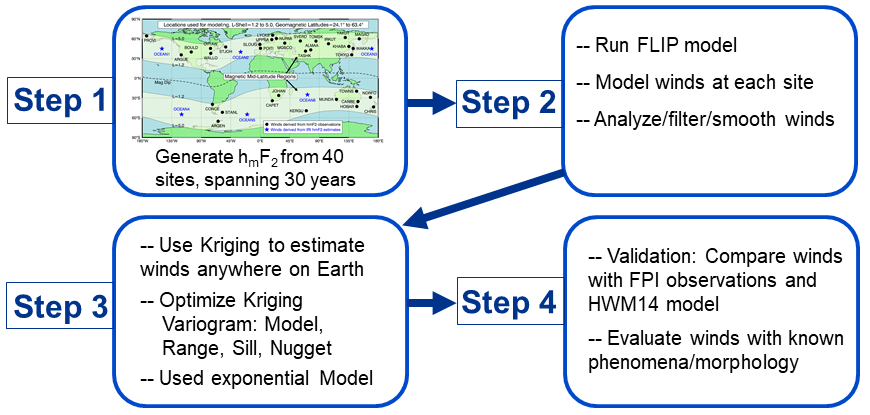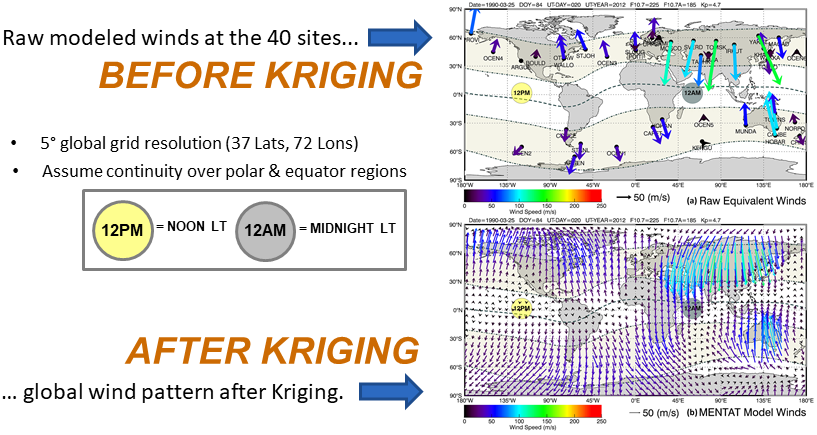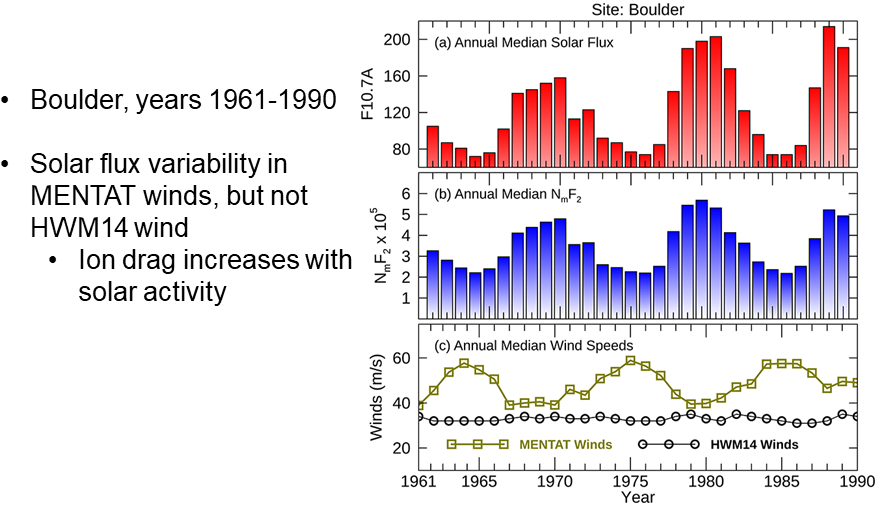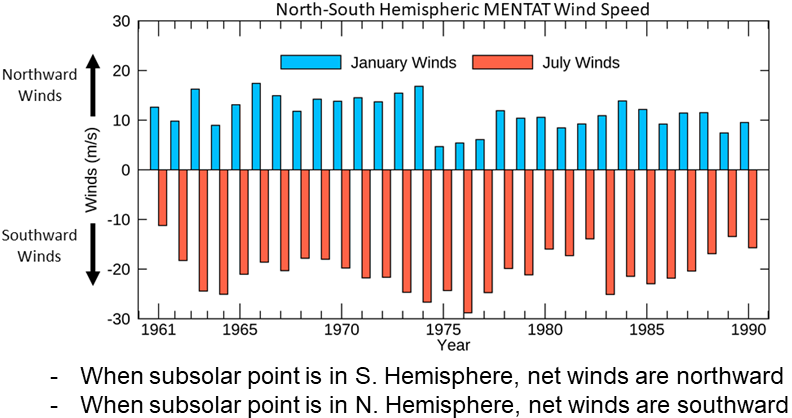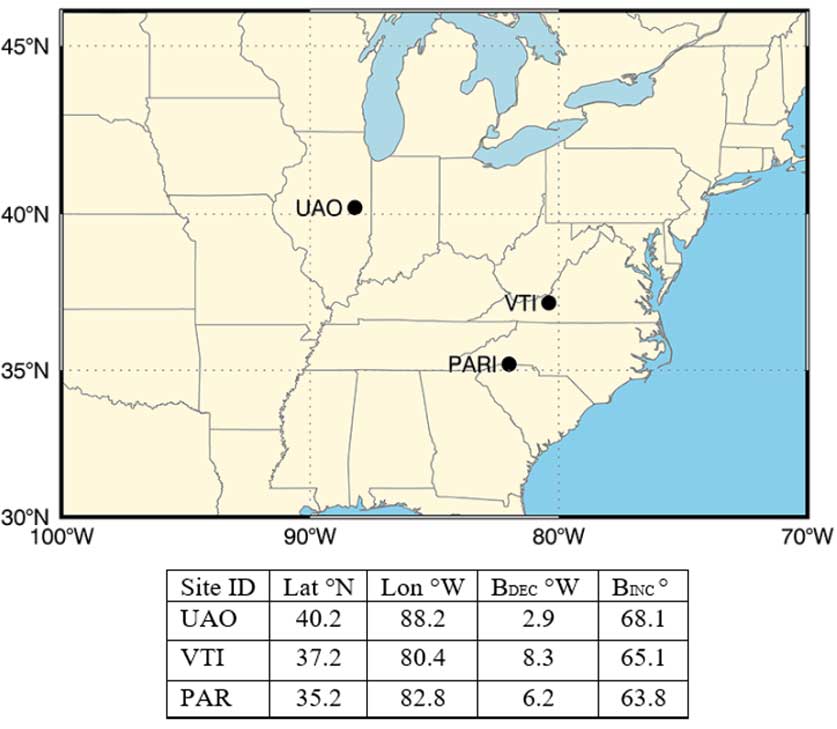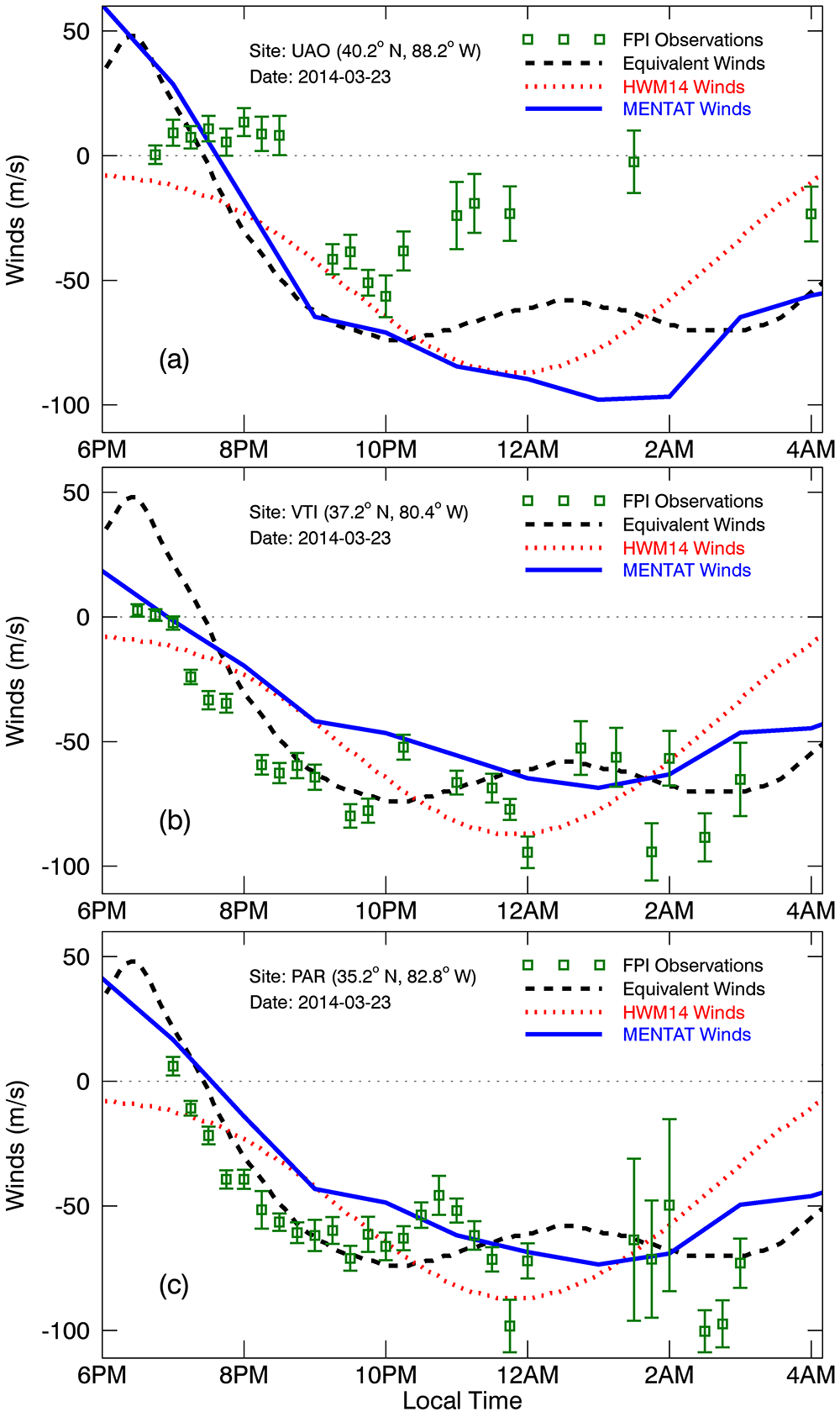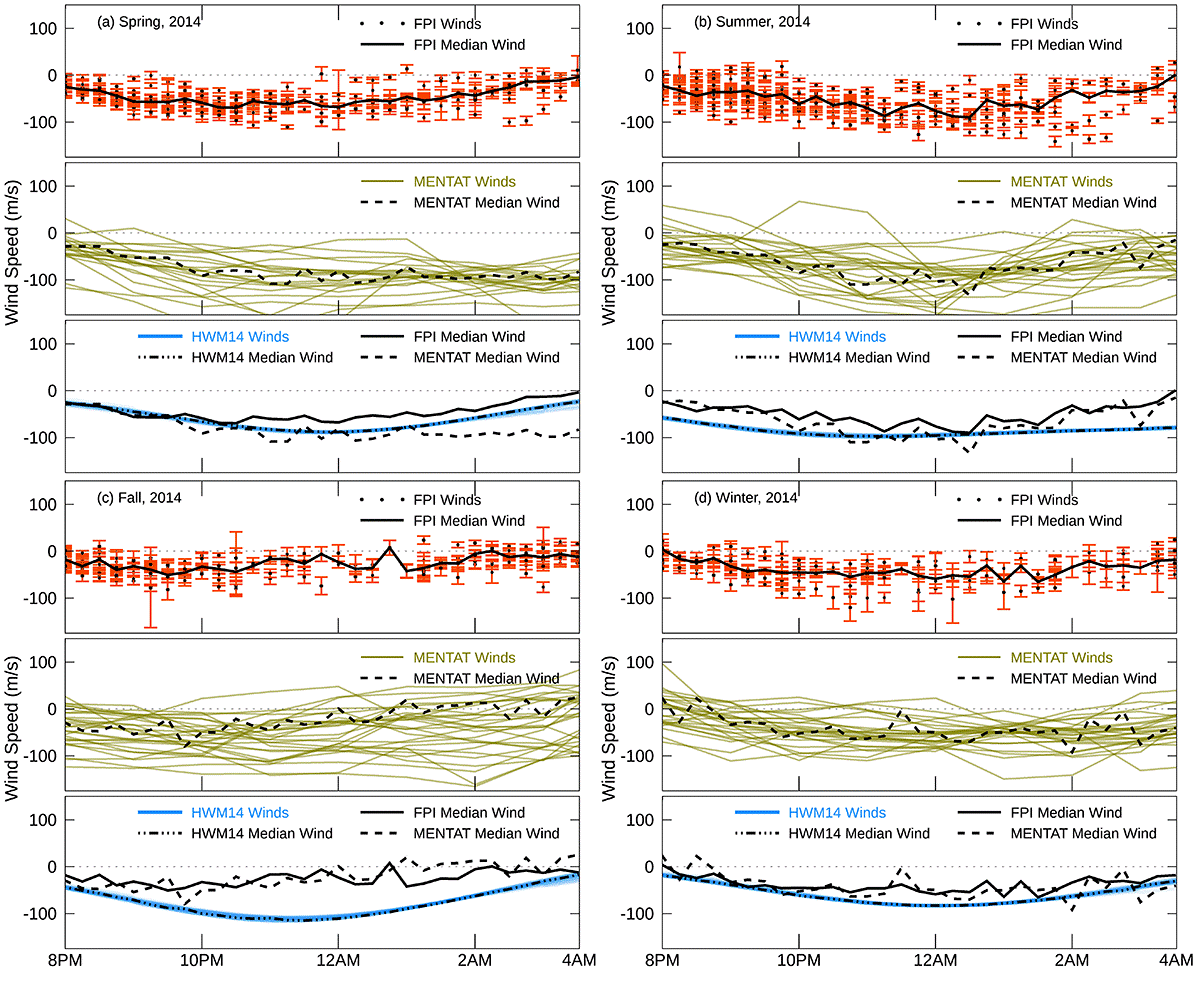Background
The influence of thermosphere neutral winds on the ionosphere is critical to understanding ionospheric dynamics. While the measurements of many of the properties of the ionosphere can be made reliably using radio propagation, radar techniques, and optical techniques, measurements of the properties of the neutral thermosphere are difficult. Measurements of upper atmospheric neutral air motion are required for any in-depth study of ionosphere-thermosphere coupling. The neutral winds affect many of the observable quantities and physical processes of the ionosphere, including the density profiles of the ionospheric F region and the generation and maintenance of electric fields. The behavior of neutral winds is one of the most important but poorly known factors affecting the day-to-day variations in ionospheric electron and ion densities because it controls the whole electron density profile by altering the rate at which the ions diffuse along magnetic field lines. Accurate quantitative modeling of F region densities is not possible without an accurate specification of neutral winds in the thermosphere. In addition, general circulation models need neutral wind data for validation.
This research employs a method to derive the magnetic meridional component of equivalent neutral winds in the thermosphere from values of hmF2 derived from ionosonde measurements. The winds obtained from hmF2 are termed 'equivalent' or 'effective' neutral winds because they comprise both neutral wind and electric field contributions to changes in hmF2. The method has been shown to produce winds with comparable accuracy to other techniques and it has the advantage of being able to obtain winds both day and night and at the many mid-latitude ionosonde sites. The numerical technique has been developed over the past 20 years. The technique makes use of the Field Line Interhemispheric Plasma (FLIP) model of the ionosphere, which is a well-regarded first-principles model of the ionosphere and plasmasphere. The findings of this research provide an improved understanding of thermospheric winds and the resulting empirical wind model will be a useful tool for ionospheric researchers.
